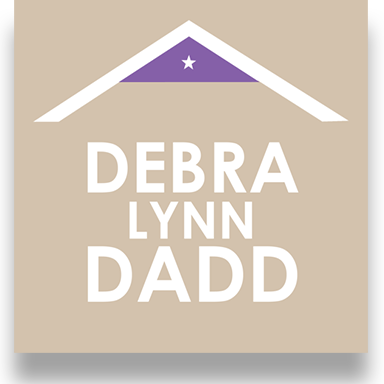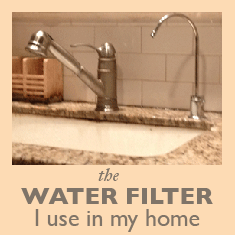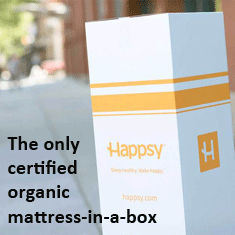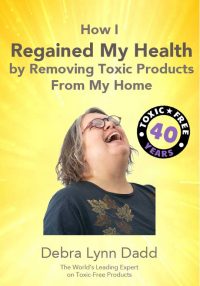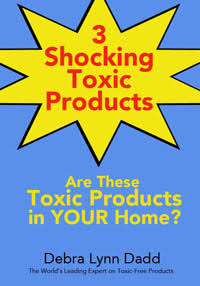
Water | Swimming Pools
Healthiest Flooring?
Question from Sammie
Debra, this is my first visit to your website and I am impressed!
We are confused as to the best type of flooring that is healthier — carpet, wood, or laminate?
We have a large single living area that is paneled with a browish Ash wood with hints of golden highlights and I have found it difficult to select a wooden floor that really blends well with the lliving area walls. We also have a concrete foundation and the dining area is white ceramic tile that would back up to the wooden flooring.
Health-wise, what type and brand of carpet is best?
Also, what brands of wooden flooring are healthiest? I’d appreciate it if you would mention some brand names of any healthier No-VOC or Low-VOC flooring.
Are there any particular brands of wooden or laminate flooring, or ceramic tile that qualify?
Debra’s Answer
Of all the types of flooring, ceramic tile is by far the healthiest. It is absolutely inert and easy to clean. Here in Florida, many houses have ceramic tile throughout because it also stays cool. You can find ceramic tile at every home improvement store and at specialty tile shops. But that’s not appropriate for all homes in every climate.
Next healthiest is hardwood flooring, IF it has a low-VOC finish. For more on wood flooring, see Types of Wood Flooring. There are many resources for low- and no-VOC flooring listed on Debra’s List. Just use the big purple SEARCH button on any page and type in “flooring” and you will get this list of flooring results which also includes other blog posts on flooring.
In general, laminate flooring is NOT healthy, as it uses adhesives that release VOCs. However, I just added one brand of laminate flooring that is certified low-VOC to Debra’s List–Wilsonart Flooring.
I don’t recommend carpet for a lot of reasons–toxicity of the carpet itself, but also toxicity of carpet shampoo, and the fact that they harbor dust, mold, and insects. But there are some natural and low-VOC carpets, which I have listed at Carpet on the Interior Decorating page of Debra’s List.
Sorry, I can’t answer questions about paint colors! How a color looks on your walls entirely depends on the light in the room. I recommend getting paint color swatches and taping them on the walls until you find the color you like. Also, you can now buy little test containers of paint colors that will give you a good patch of actual paint of that color on the wall.
Making My Own Wool Insulation
Question from Jessica
I’m wondering if you know how to make my own wool insulation? I have access to a lot of free wool and a small living structure to insulate. I know the basics of processing wool but don’t know how to make the actual insulation batts.
Debra’s Answer
When I insulated my kitchen in California with wool, I just got some wool and stuffed it in the wall between the studs. I didn’t make batts. It worked fine.
Anyone else have experience with this?
Particle/Press Board: Will it fully out gas and become safe?
Question from wt
hi,
we’re remodeling my house, and my husband put some “sound board” on the studs under the dry wall to help with sound reduction. this “sound board” smells HORRIFFIC! it seems very similar to particle/press board. we’re hoping that placing the dry wall over it, would essentially seal it, so the smell/toxicity cannot come out. however, not sure if that theory will work. or, are considering getting rid of the sound board all together.
if, in fact, this sound board is similar in composition to press board/particle board….do these types of materials EVENTUALLY FULLY OUTGAS? or is this something that does not, and needs to be ‘sealed’ with some sort of sealant?
knowing the answer to that question, would help us to determine how to proceed with this project.
and real quick, on the topic of press board: if i have a press board dresser from ikea…will this eventually outgas? (I’ve had these drawers for about 3-4 years..and my it still stinks!) my clothes left in it, wreak of the formaldehyde (ick!). since i wear primarily 100% cotton, are my natural fabrics absorbing the formaldehyde from the drawers??!! :O
would appreciate your thoughts..
Debra’s Answer
First, “particleboard” and “pressboard” are two different things.
Particleboard is made of wood shavings held together with a formaldehyde-based resin that outgasses. You can see the wood shavings throughout the board on both the flat side and the cut side and it has an odor–strong when new.
Pressboard is made from smaller wood fibers that are held together by a process using pressure and steam. It is a thin, brown board, with one smooth side and one textured side. It comes in a solid sheet and perforated with holes to make “peg board”. Pressboard is completely odor-free and I consider it to be a nontoxic product.
It sounds like what you have installed is particleboard, or a similar product.
Formaldehyde offgasses from particleboard until there is no more formaldehyde to offgas. It is very intense when the particleboard is new and decreases over time. I read that the half life of formaldehyde in particleboard is three to six years, but can still contribute to indoor air pollution 12 to 24 years after installation (Spectrum–Newsletter of the Society Promoting Environmental Conservation, Vol 26, No. 1). This seems reasonable to me. How long any given installation takes to full outgas depends on the conditions. More heat will make it outgas faster.
There is a product which can be applied to particleboard to block fumes, made by AFM Enterprises. I used this product many years ago with success, when I purchased a table that I thought was solid wood, which actually contained one piece of particleboard about 1′ x 3′ one inch thick. I applied the vapor barrier finish and was able to use the table with no problem.
Natural Treatment for Nail Fungus
Question from Ali
Debra,
My daughter is 6 and has terrible eczema. It effects her nails, which have become fungus and makes her skin peel off around her finger tips. Also in the inner arms is bad.
Do you have any recommendations for nail fungus so I can avoid a toxic chemical or medicines, she is so young?
Thanks
Ali Roberts
Debra’s Answer
I don’t have any personal experience with nail fungus, but it’s a good idea to use natural remedies as the FDA has warned that anti-fungal drugs have been linked to severe liver damage and death.
There is a long list of possible natural cures posted at Earth Clinic: Cure Nail Fungus–everything from apple cider vinegar and hydrogen peroxide to tea tree oil and coconut oil.
If anyone has successfully used natural rememdies for nail fungus, please respond to this post and let us know what you did.
Getting the Smell Out of a New Refrigerator
Question from Debi
How can you get the smell out of a new refrigerator? I have never had a new fridge before so was not aware it would smell so bad!
I washed it out with soapy water and then have put a bowl of baking soda on each shelf…4 days later, it still smells. It smells like it is more of the vinyl around the edge of the fridge keeping it airtight versus actually inside the fridge but then again I can’t get in there and close the door to see if it smells.
I remember a few years ago we had put a bottle of nail polish in the butter bin in our fridge door and when we went to use the butter it tasted like nail polish. I am afraid to put fod in there because I don’t want it to taste like the plastic smell we are smelling.
Any suggestions?
Debra’s Answer
This IS a problem with new refrigerators, as they are full of outgassing plastic. And the outgassing plastic WILL get into your food.
My general advice is to purchase a used refrigerator, as the plastic does outgas over time, but last summer I myself purchased a new refrigerator because i just fell in love with the design.
It’s what’s called a “trio” because it has two refrigerator doors that open on top from the center, and one freezer door on the bottom. Inside there are glass shelves and easy-to-reach-and-open see-through bins for produce. It is just a joy to use. Several companies make them. The brand I bought was Kenmore at Sears (I’d give you a link, but it was too long).
I was concerned that the interior would have an odor, but the model on the floor didn’t have an odor. So I took a chance, and the one that was delivered to me didn’t have an odor either. Perhaps this was just a fluke, I can’t guarantee it, but this was my experience.
As for your problem, I would have suggested baking soda. Does anyone else have a suggestion that has worked. Readers?
How safe is Clorox Bleach?
Question from Laura
I’ve used Clorox Bleach steadily for years. It’s the only thing that seems to ‘clean’. The products sold in stores ( i.e. Clorox Softscrub, etc.) used to mask the bleach smell that have bleach in them, don’t do the job as well as just bleach alone. I usually blend a few drops of bleach on a rag with Polmolive dish soap to do my kitchen counters then rinse afterwards. The smell IS strong but goes away after a few minutes.
Is using Bleach unhealthy on the lungs? I really like the stuff and don’t want to stop using it but if it’s toxic then I’ll have to find other options.
Thanks for any info on this.
Sincerely,
Laura
Debra’s Answer
Product labels on chlorine bleach warn only of the danger when accidentally ingested, however, the inhaled fumes also pose a hazard. Toxicology books report that chlorine is “toxic as a [skin] irritant and by inhalation.”
The Material Safety Data Sheet for Chlorox Bleach states:
Many people do have adverse reactions to chlorine. The chlorine in bleach is the same stuff people often want to remove from drinking water.
Personally, I don’t use chlorine bleach or any products containing chlorine, and I remove it from my water for drinking, cooking, and bathing. That would be my recommendation for you, too.
Mercury Thermometers and Your Family’s Health
I want to pass along to you a pamphlet I just found called “Mercury Thermometers and Your Family’s Health”.
I knew that mercury is a dangerous chemical, but didn’t really understand how hazardous a broken thermometer can be, how to properly dispose of a mercury thermometer, or that non-mercury thermometers are available (I actually have a digital thermometer, but didn’t buy it as a mercury alternative). All this is covered in this easy-to-read pamphlet.
